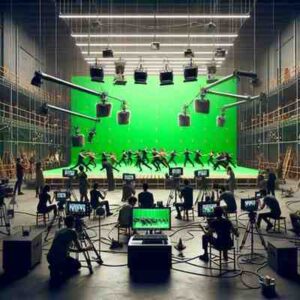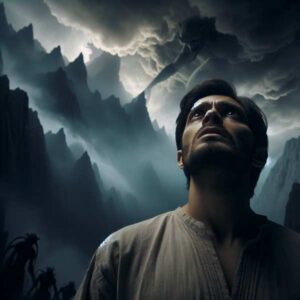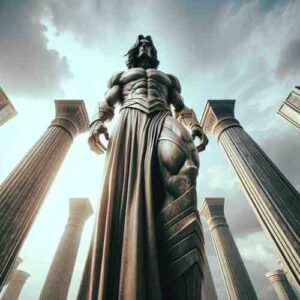Contents
- Filmmaking Techniques
- Camera Angles: Filmmaking Techniques Crafting Perspectives
- Filmmaking Techniques – Lighting: Lighting: mood
- Sound Design: Helping to Improve the Experience for Auditors
- Editing the Narrative Flow: Crafting
- Special Effects: Create the extraordinary
- A Guide to the Art of Editing
- Amazing Special Effects for Viewers
- Conclusion
Filmmaking Techniques
Filmmaking is a complex art that combines a myriad of techniques for telling compelling stories that bring out emotions. Being able to master these techniques is essential for any filmmaker aiming to create unforgettable and impactful films. This piece will cover fundamental cinematic techniques like camera angles, illumination, sound design editing, and special effects. We’ll explain how each affects storytelling and makes the viewer’s experience more enjoyable.

Camera Angles: Filmmaking Techniques Crafting Perspectives
Camera angles play a crucial role in telling a story through images. They shape the perception of a scene and can profoundly impact the viewers’ comprehension of the story and the characters.
1. High Angle:
A high-angle photograph places the camera high above the subject, looking down. This makes the subject appear smaller, susceptible, weak, or insecure. In “The Lord of the Rings: The Fellowship of the Ring,” the high-angle shot of Frodo and Sam facing Mordor emphasizes their massive task and their vulnerability. Similar to “Psycho,” Alfred Hitchcock employs a high-angle shot to evoke a sense of helplessness and fear during Marion Crane’s attack in the shower.
2. Low Angle:
Contrarily, a low-angle photograph places the Filmmaking Techniques camera in front of the subject’s face, pointing upwards. This can help the subject appear strong, either dominant, intimidating, or powerful. That’s the case in “The Dark Knight.” The low-angle images of Batman offer a sense of his powerful presence and power. Consider Orson Welles’ “Citizen Kane,” a classic example of how low-angle shots reinforce Charles Foster Kane’s supremacy and influence.
3. AnglDutche:
A Dutch angle, or a canted angle, rotates cameras to one angle to produce a tilted horizon line. This kind of technique may convey anxiety, disorientation, or even tension. The movie “Inception” employs Dutch angles to enhance the surreal and disorienting nature of the scenes in its dreams. Additionally, in “Thor,” Kenneth Branagh frequently makes use of Dutch angles in order to show the otherworldly and unstable environment of Asgard.
4. Close-Up:
A close-up photo focuses on a specific subject, typically a character’s face, to capture detailed expressions and emotions. Within “The Silence of the Lambs,” Hannibal Lecter’s close-ups heighten the intensity and psychological tension between him and Clarice Starling. Another impressive use of closeups comes from “Schindler’s List,”” in which Steven Spielberg uses them to communicate the intense emotions of the characters in pivotal scenes.
5. Wide Shot:
A wide-angle shot is an image’s broad perspective that shows subjects in their surroundings. The wide angle can be useful for providing context and setting. In “The Revenant,” expansive shots of the vast, snowy wilderness underscore the main character’s sense of isolation and adversity. When it comes to “Lawrence of Arabia,” David Lean’s extensive use of shots with wide angles emphasizes how vast the desert is, as well as the journey of the main characters.

Filmmaking Techniques – Lighting: Lighting: mood
Lighting plays a crucial role in establishing the atmosphere and mood of a film. It can highlight specific aspects that make a scene more compelling, stimulate emotions, or guide the spectator’s eye to the scene.
1. High-Key Lighting
The high-key light source is bright and evenly illuminated, resulting in minimal shadows. It makes for a happy, light, spacious, and unflinching scene. Films with romantic themes like “La La Land” often use high-key lighting that enhances their lighthearted and vivacious tone. Similarly, in “The Sound of Music,” high-key lighting contributes to the overall feeling of warmth and pleasure.
2. LIGHTING LOW KEEP:
Low-key lighting creates strong contrasts between light and dark, as well as deep shadows with limited fill light. This is a common technique in horror films and thrillers to create suspense and tension. “The Godfather” famously employs low-key lighting to express the dark,Filmmaking Techniques deadly world of organized crime. Another example is in “Blade the Runner,” where the use of low-key lighting helps to convey the film’s darkness and noir look.
3. Backlighting:
A backlighting technique places the light source behind the subject. This creates the appearance of a silhouette. It adds an impressive and ethereal appearance to scenes. You can create striking and atmospheric visuals in “Blade in 2049” using backlighting, which adds to the film’s futuristic and dystopian look. Steven Spielberg employs backlighting in the iconic cycling scene of “E.T. the Extraterrestrial,” crafting an unforgettable experience.
4. Practical Lighting:
Practical lighting entails using visible light sources within your scene, such as candles and lamps, to create a sense of realism and immersion. “Barry Lyndon” incorporates realistic lighting with candles to authentically portray how it was in the 18th century. In “The Exorcist,” the practical lighting of streetlights, lamps on beds, and even the bed adds to the dark, eerie setting.

Sound Design: Helping to Improve the Experience for Auditors
Sound design encompasses all sounds in a documentary, including dialogue or sound effects, as well as any ambient noise. It plays a significant role in shaping the audience’s experience and enhancing the emotional impact of a piece.
1. Diegetic Sound:
Filmmaking Techniques Characters can hear diegetic sounds, which originate from the movie’s universe. Diegetic sound encompasses footsteps, dialogue, and the sounds of the natural world. In “Jurassic Park,”” an eerie soundscape of birds singing and dinosaurs roaring will make the viewer feel part of the location. “Apocalypse Now,” set in the Vietnam War environment, enhances authenticity, suspense, and tension through the drone of helicopters and the presence of jungle wildlife.
2. Non-Diegetic Sound:
Characters don’t hear non-diegetic sound, which originates from outside the film’s world. It includes both the film’s music and voice-over narration. The cult score for “Star Wars” by John Williams is a non-diegetic component that enhances the epic, adventurous style of the movie. In “Pulp Fiction,” the varied soundtrack creates the tone for different scenes, which contributes to the character’s distinct style.
3. Foley:
The art of foley involves creating customized sounds that synchronize with specific on-screen actions. This method adds real-world realism and intensity to the auditory experience. Foley plays a crucial role in “A Quiet Room,” creating a tense and suspenseful atmosphere as the main characters navigate an environment where music can have deadly consequences. When it comes to “Mad Max: Fury Road,” Foley designers meticulously created the soundtracks for the sounds of engine noises, weapons, or explosions to enrich the intensity of the action sequences.
4. Ambient Sound:
A sense of place and atmosphere is created by ambient sound. It can sound like wind, rain, traffic, and even distant chatter. In “Lost in Translation,” the ambient sounds of Tokyo’s bustling streets as well as serene hotel rooms add to the motion picture’s contemplative and intense mood. In “No Country for Old Men,” the sparse use of ambient sounds creates a feeling of loneliness and unease.
Editing the Narrative Flow: Crafting
Editing is a process that involves taking and arranging footage to produce a coherent and exciting story. It determines a film’s pacing structure and rhythm.
1. Editing Continuity:
Continuity editing provides a seamless and coherent flow of events, maintaining spatial and temporal consistency. It is essential to keeping viewers focused and engaged. “The Shawshank Redemption” uses continuity editing, which chronicles Andy Dufresne’s time in prison clearly and coherently. In “Forrest Gump,” continuity editing smoothly weaves between different eras of the protagonist’s life, creating an engaging and cohesive story.
2. Montage:
A montage consists of short shots edited together to compress time, communicate the message, or create emotions. Montages often serve as a way to demonstrate the passage through time or show the progress of a character. “Rocky” employs them, with the training sequences creating a visual legend that highlights Rocky Balboa’s diligent efforts and swift readiness for battle. In the song “Up,” the opening scene poignantly charts the life tale and journey of Carl and Ellie, which evokes profound emotional resonance.
3. Jump Cut
A jump cut is a technique that frequently transitions between shots within the same scene, creating an abrupt or disorienting feel. This is an effective technique to portray a character’s emotional position or break from the norm of narrative flow. Jean-Luc’s “Breathless” popularized the use of jump cuts to generate an air of urgency along with energy. Jump cuts depict the scattered chaos of the characters dealing with addiction in “Requiem for a Dream.”
4. Cross-Cutting:
Cross-cutting is the process of alternating between two or more scenes running simultaneously but in different locations. This creates tension and exposes the parallels between these scenes. In “The Godfather,” the intercutting between the ritual of baptism and the murder by the Corleone family’s enemies results in a stunning juxtaposition between innocence and brutality.” “Inception” employs cross-cutting to delve into the diverse layers of dreams and heighten the complexity and tension of the narrative.
5. Match Cut:
A match cut seamlessly joins two visually comparable images, allowing for seamless transitions between scenes or segments. This technique could highlight themes or visually related parallels. This is the case in “2001: A Space Odyssey,” where the iconic match made from bone is thrown up into the sky to become a spacecraft, demonstrating the leap in technology and human development. “Lawrence of Arabia “Lawrence of Arabia,” cut out of a match lit by the dawning sun, beautifully morphs our protagonist’s contemplation into the massive desert landscape.
Special Effects: Create the extraordinary
“Special Effects” (SFX) contain a broad variety of methods used to create illusions or visual magic in films. They can be practical (created on the set) or digital (created via computer-generated graphics, like CGI).
1. Practical Impacts
It is possible to create practical effects on location and capture them with cameras. This could include makeup animatronics, prosthetics, and miniatures. “The Thing” employs practical effects to craft the film’s iconic, gruesome, and believable creature models.
2. CGI:
Computer-generated imagery enables filmmakers to produce complex and stunning visuals that would otherwise be unattainable and impossible. “Avatar” transformed the application of CGI thanks to its imaginative detail and richly detailed space.
3. Compositing:
Composing involves combining multiple visual elements into a single image. Actors typically use this technique to immerse themselves in virtual environments. “The Matrix” employs the compositing technique to blend live action footage and CGI effects, resulting in the film’s groundbreaking action sequences.
A Guide to the Art of Editing
To ensure smooth transitions during continuity editing
Continuity editing allows for a seamless flow between shots, ensuring that the plot progresses smoothly. To ensure spatial and temporal coherence, it employs techniques such as shoot-reverse-shots and match cuts. Effective continuity editing keeps participants engaged and makes the narrative more coherent.
Filmmaking Techniques Montage to Visual Metaphors
Montage sequences mix and match different images to convey complex ideas and emotions. By combining images, filmmakers create visual metaphors that aid storytelling. Filmmakers frequently employ montages to depict the passage of time, character growth, and thematic contrasts.
The jump cut is a wonderful way to pace yourself and your energy.
Jump cuts break the continuity by abruptly switching between two shots. It creates a sense of urgency as well as confusion. Usually, action scenes or character states of mind employ this type of technique. Jump cuts can infuse the narrative with energy and excitement, ensuring viewers remain engaged and captivated.
Amazing Special Effects for Viewers
Practical Effects for Tangibility
Practical effects rely on physical props and models to create on-screen illusions. From pyrotechnics to animatronics, practical effects provide a tangible quality, which CGI is often lacking. These effects anchor the film in reality, enhancing the credibility of the extraordinary.
CGI for unlimited creativity
Computer-generated images (CGI) have endless creative possibilities. From creating complete worlds to improving the small details of a scene, CGI helps filmmakers expand the limits of their imagination. But you must use CGI with care to maintain the authenticity of the film.
We are combining practical CGI effects with CGI effects.
The best films frequently combine both practical and CGI effects for stunning visuals. When combining physical elements with digital enhancements and effects, filmmakers can create smooth and immersive experiences. This method of hybridization leverages the potential of both techniques.
Conclusion
Filmmaking techniques are essential components of both auditory and visual storytelling. Each of the techniques, in everything from camera angles to lighting to editing, sound design, and effects, contributes to the narrative and improves the user’s experience. Once they have mastered these techniques, filmmakers will be able to make emotionally powerful and immersive films that draw viewers in and leave a lasting impact. When drawing inspiration from classic examples and experimenting with fresh approaches, the art of filmmaking remains in flux, offering an endless array of possibilities for creativity.